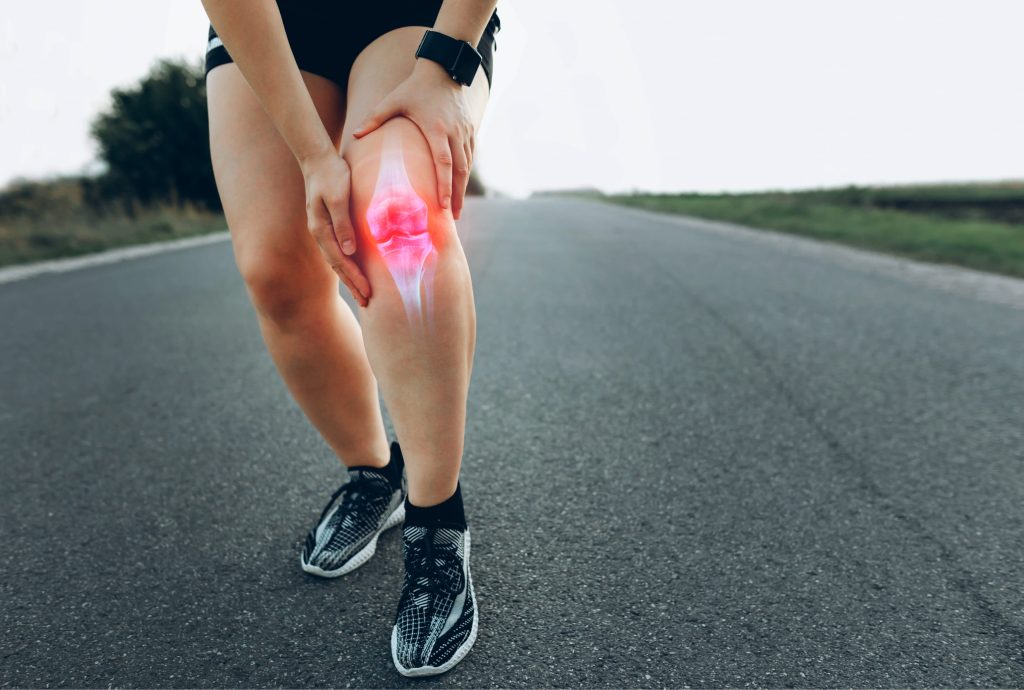Runner’s Knee: What You Need to Know
Runner’s knee, also known as patellofemoral pain syndrome (PFPS), is a common condition that affects runners and athletes alike. It causes pain around the kneecap, making it difficult to continue training or even perform simple activities without discomfort. The exact cause of runner’s knee is still unknown, but several factors can contribute to its development. It is most commonly experienced by active people engaged in activities that put repetitive stress on the knee joint, such as running, cycling, and hiking.
Causes and Risk Factors of Runner’s Knee
The causes of runner’s knee vary, with a range of factors contributing to the development of this condition. Understanding these causes is crucial for both prevention and effective treatment.
Training Errors
One of the primary drivers of runner’s knee is training errors, such as a sudden increase in the volume or intensity of physical activity. This sudden spike in stress on the patellofemoral joint can overwhelm the body’s ability to adapt, leading to the onset of pain and discomfort. Similarly, inadequate recovery time or excessive hill work can also place excessive demands on the knee, increasing the risk of runner’s knee.
Overuse and Overtraining
Prolonged periods of heavy use and training, even for the most conditioned athletes, can lead to the development of runner’s knee if adequate time for recovery is not provided. For example, a distance runner completing a particularly rigorous week of training may experience the emergence of runner’s knee pain.
Injury
Injuries to the ankle, hip, or knee can alter the biomechanics of the joint, eventually causing symptoms of runner’s knee. These structural changes can disrupt the smooth interaction between the patella and the femur, resulting in increased stress and friction within the patellofemoral joint.
Muscle Imbalances
Weak or underdeveloped thigh or hip muscles can cause the patellofemoral joint to bear a disproportionate amount of stress during physical activity. Over time, this uneven distribution of stress can contribute to the development of runner’s knee.
Excess Body Weight
Carrying excess body weight can significantly increase the stress and pressure placed on the knees during everyday activities, such as walking. This additional burden on the knee joints can predispose individuals to the onset of runner’s knee.
Flexibility Limitations
Tight muscles, particularly in the quadriceps (front of thigh), gastrocnemius (calf), iliotibial band (outside of thigh), or hamstrings, may increase the risk of developing runner’s knee by limiting the joint’s range of motion and flexibility.
Symptoms of Runner’s Knee
The main symptom of runner’s knee is pain in the front or anterior region of the knee, typically around or behind the kneecap. This pain is often exacerbated during movement, such as running, squatting, or prolonged sitting. A person with runner’s knee may also experience a sensation of rubbing, grinding, or clicking within the knee joint during these activities.
The pain associated with runner’s knee can range from a dull ache to a sharp, stabbing sensation, and it may worsen with prolonged use of the knee. In some cases, the kneecap may also be tender to the touch, further indicating the presence of patellofemoral pain syndrome.
It is important to note that while these symptoms are commonly associated with runner’s knee, they may also be indicative of other knee-related conditions. Therefore, a comprehensive evaluation by a knee specialist is important for an accurate diagnosis and the development of an appropriate treatment plan.
Diagnosing Runner’s Knee
Diagnosing runner’s knee typically involves a combination of physical examination, medical history, and, in some cases, imaging tests. During the physical examination, a knee specialist will assess the range of motion, joint stability, and muscle strength around the knee. They may also perform specific tests to evaluate the function of the patellofemoral joint and identify any underlying issues.
In addition to the physical examination, the knee specialist will gather information about the patient’s medical history, including any previous injuries or conditions that may have contributed to the development of the runner’s knee. This information can help guide the diagnostic process and rule out other potential causes of knee pain.
Imaging tests, such as X-rays or magnetic resonance imaging (MRI), may be ordered to provide a more detailed assessment of the knee joint. These tests can help identify any structural abnormalities, joint degeneration, or other underlying issues that may be contributing to the patient’s symptoms.
By combining the physical examination, medical history, and imaging findings, the knee specialist can establish a comprehensive diagnosis and develop an appropriate treatment plan for people suffering from runner’s knee.
Treatment of Runner’s Knee
The treatment of runner’s knee typically involves a multifaceted approach, tailored to the person’s specific needs and the underlying cause of the condition. The primary goals of treatment are to reduce pain, restore normal joint function, and prevent the recurrence of symptoms.
Non-Surgical Treatments
In the majority of cases, conservative, non-invasive treatments are usually recommended. These approaches may include:
- Rest and Activity Modification: Temporarily reducing or modifying the activities that exacerbate the pain, such as running or high-impact exercises, can help alleviate the stress on the patellofemoral joint and allow for healing.
- Ice and Heat Therapy: Applying ice to the affected area can help reduce inflammation and pain, while heat therapy can improve blood flow and promote healing.
- Medications: Over-the-counter anti-inflammatory medications may be prescribed to reduce pain and inflammation.
- Bracing or Taping: The use of knee braces or specialised taping techniques can help provide additional support and stability to the patellofemoral joint, reducing stress and pain.
- Orthotics: Custom-made shoe inserts or orthotics can help correct any underlying biomechanical issues, such as overpronation or high arches, that may be contributing to the development of runner’s knee.
Invasive Treatments
In more severe or persistent cases of runner’s knee, a knee specialist may recommend treatment options such as:
- Corticosteroid Injections: Injections of corticosteroids directly into the patellofemoral joint can help reduce inflammation and pain, providing temporary relief.
- Platelet-Rich Plasma (PRP) Therapy: This regenerative treatment involves the injection of the patient’s own concentrated platelets into the affected area, which can stimulate the body’s natural healing processes.
- Arthroscopic Surgery: In rare cases, arthroscopic surgery may be considered to address any structural abnormalities or damage within the patellofemoral joint that cannot be effectively treated through conservative means.
The specific treatment plan for a person with runner’s knee will depend on the underlying cause, the severity of the condition, and the patient’s response to the initial conservative interventions.
How to Prevent Runner’s Knee?
Proactive measures can be taken to reduce the risk of developing runner’s knee or prevent its recurrence. These preventive strategies include:
- Proper Training Techniques: Gradually increasing the volume and intensity of physical activity, allowing for adequate recovery time, and avoiding excessive hill work or sudden changes in training can help minimise the risk of overuse injuries.
- Strength and Flexibility Exercises: Incorporating exercises that target the quadriceps, hip, and core muscles can help improve overall joint stability and reduce the stress on the patellofemoral joint. Additionally, stretching the muscles around the knee, such as the quadriceps, hamstrings, and iliotibial band, can improve flexibility and range of motion.
- Proper Footwear: Wearing well-cushioned, supportive shoes that are appropriate for the individual’s foot type and activity level can help mitigate the impact on the knees and prevent the development of runner’s knee.
- Weight Management: Maintaining a healthy body weight can significantly reduce the amount of stress and pressure placed on the knee joints, lowering the risk of runner’s knee and other related conditions.
- Cross-Training: Incorporating a variety of low-impact exercises, such as swimming, cycling, or elliptical training, can help reduce the repetitive stress on the knees while still maintaining overall fitness.
Conclusion
Runner’s knee can be a frustrating setback for anyone. Understanding the anatomy, causes, and risk factors associated with this condition is crucial for both prevention and effective treatment. By recognising the early signs of runner’s knee, seeking prompt medical attention, and implementing a comprehensive treatment plan tailored to the individual’s needs, those affected can regain their mobility, reduce pain, and return to their desired physical activities. Furthermore, proactive measures, such as proper training techniques, strength and flexibility exercises, and weight management, can help mitigate the risk of developing a runner’s knee in the first place.




